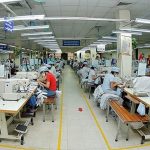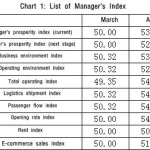In a boost to the readymade garment sector, the Budget has announced duty-free entitlement for import of trimmings, embellishments and other specified items to five per cent of the value of their exports, from the current three per cent.
“This will help increase exports and is a good boost for the industry,” said Rahul Mehta, president of the Clothing Manufacturers Association of India. The government has fixed a $50-billion textile export target for the current year. Nearly 40 per cent of this is readymade garments.
The move will also help Indian manufacturers to compete with other countries in getting more orders from global retail sourcing entities, such as Walmart. The industry says the move will help bring down the cost of readymade garments meant for export by two to three per cent.
The government also removed basic customs duty on specified inputs for manufacture of spandex yarn, from five per cent. About Rs 100 of these inputs are imported annually. “We were losing to large players who were directly importing spandex yarn. We will now be at par with these companies,” said YC Gupta, head, business and operations, at Indo Rama Industries, a leading manufacturer of spandex, the stretch material used in finished products such as stretch denim, swimwear and leggings.
According to industry experts, export opportunities could also be opened with the announcement of six mega textile clusters at Bareilly, Lucknow, Surat, Kutch, Bhagalpur, Mysore and one in Tamil Nadu, apart from a trade facilitation centre. The Budget provides Rs 600 crore for this.
“The trade facilitation centre, crafts museum and academy for the handloom sector, coupled with six mega clusters, would help both domestic and export marketing of traditional crafts like zari and pashmina, among others,” said the Handloom Export Promotion Council (HEPC).
The minister has allocated Rs 50 crore for a trade facilitation centre and a crafts museum to promote handlooms. And, proposed to set up a Hastkala Academy for preservation, revival and documentation of the handloom and handicraft sector, in a public-private partnership, with an allocation of Rs 30 crore.
To encourage Kashmiri pashminas, the government has proposed to start a Pashmina Promotion Programme and a programme for the development of other crafts in Jammu and Kashmir, allocating Rs 50 crore.
The Rs 13,500-crore Tirupur industry has welcomed the Budget. Tirupur Exporters Association President A Sakthivel hailed the Budget saying it would benefit the domestic textile manufacturing sector. He welcomed considering the association’s requisition for increasing the duty free entitlement for import of trimmings, embellishments and other specified items from three per cent to five per cent of the value of their exports and also highlighted the removal of Customs duty from five per cent to nil for import of specified inputs for manufacture of spandex yarn which may help to reduce the spandex yarn manufactured domestically.
‘This should give us a cutting edge in the global market,’ he said, adding, ‘the inclusion of certain accessories and embellishments used for made-ups under the eligible list of duty-free import is another welcome move.’
Sakthivel lauded the establishment of Export Promotion Missions with states, a long pending requisition of the association for the promotion of exports.
He also welcomed the announcement on setting up of six textile clusters in various places in the country, including one in Tamil Nadu.
He noted the garment sector was expecting an announcement of three per cent interest subvention on packing credit, which expired in March 2014, in the Budget. That there was no mention of the continuance of interest subvention in the Budget was seen as a negative.








